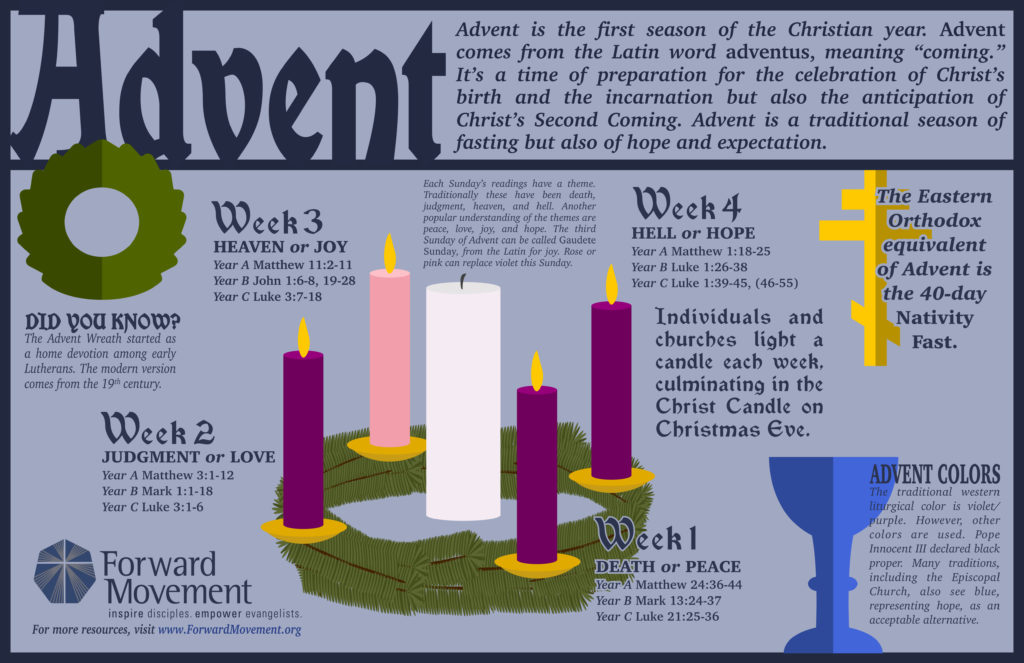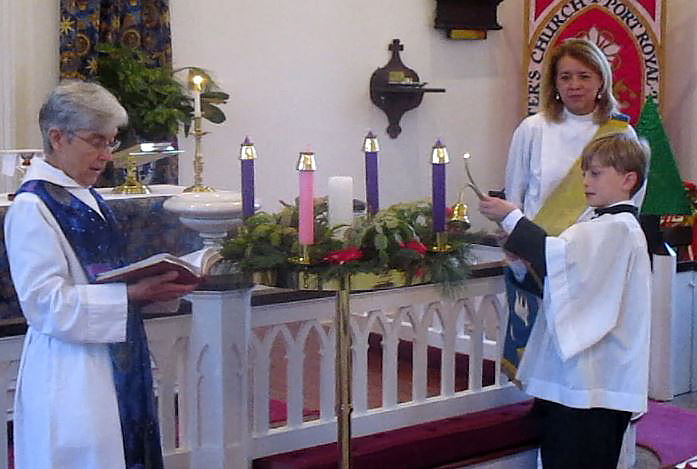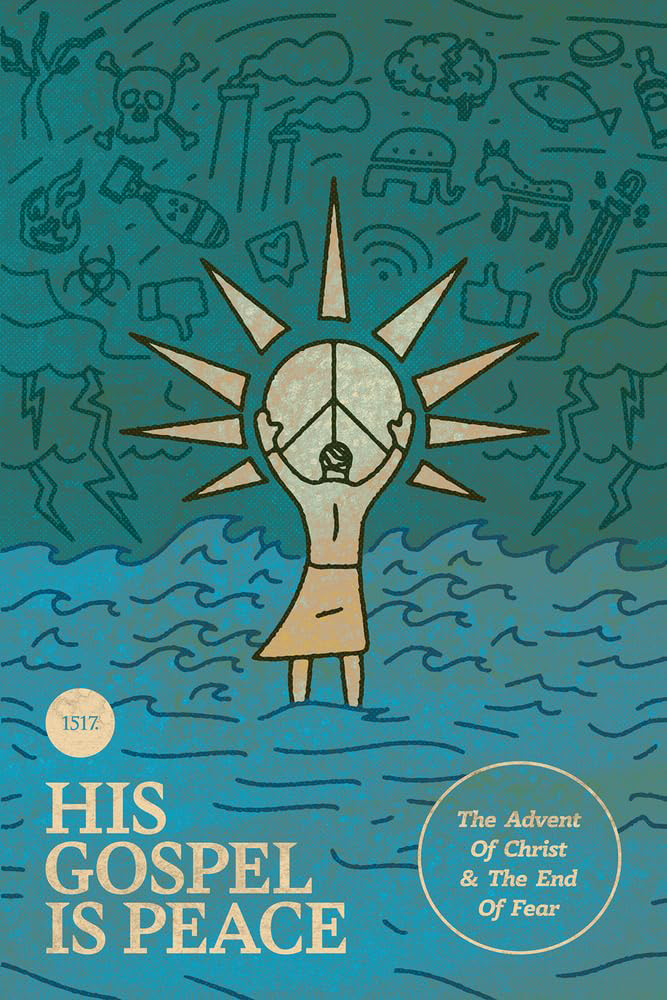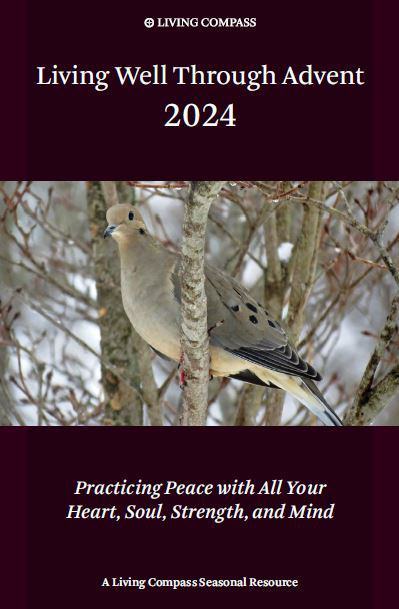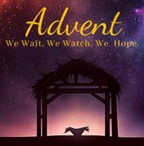Faith, Hope, Love, and Joy
“But now abide faith, hope, love, these three; but the greatest of these is love.”(1 Cor. 13:13)
“But the fruit of the Spirit is love, joy, peace, patience, kindness, goodness, faithfulness, gentleness, self-control; against such things there is no law.” (Gal. 5:22-23)
The circle of the wreath and the evergreens that make it up both signify God’s endless mercy and undying love as well as God’s Eternity. Three purple candles and one rose-colored (pink) candle are evenly spaced around the wreath. There is one larger white candle in the center of the wreath. The wreath can be as simple as four candle holders with greenery laid around them to form a circle. However, some traditions attach meanings to using different greens, each signifying another aspect of the season. These include:
Ivy—to remind us of the human spirit clinging to God’s strength.
Cedar—to remind us of eternal life available to all through Christ.
Holly—to remind us of Jesus’ crown of thorns.
Bay—to remind us of victory over sin and death.
There are 4 candles, one for each week in Advent, are used with one larger white candle in the middle as the Christ candle.
During each Sunday of the Advent season, we focus on one of the four virtues Jesus brings us: Hope, Love, Joy and Peace
Faith is trust in God and reliance on His Word. “And without faith it is impossible to please Him, for he who comes to God must believe that He is, and that He is a rewarder of those who seek Him.” (Heb. 11:6)
Hope is confident expectation of good. “For whatever was written in earlier times was written for our instruction, that through perseverance and the encouragement of the Scriptures we might have hope.” (Rom. 15:4)
Love is the genuine inner readiness and longing to secure the good of others. “We love, because He first loved us.” I Jn 4:19
Joy is a sense of well-being and delight in good well-secured. “If you keep My commandments, you will abide in My love; just as I have kept My Father’s commandments, and abide in His love. These things I have spoken to you, that My joy may be in you, and that your joy may be made full.” (John 15:10-11)
Three of the candles are purple This is the color of penitence and fasting as well as the color of royalty to welcome the Advent of the King.
The Third candle is pink, a color of joy, the joy that Jesus is almost here and fasting is almost order. Gaudete Sunday (from the Latin meaning “rejoice”) which is taken from Philippians 4:4-5, the Entrance Antiphon of the day.
While the Advent wreath with its four candles did bring light to churches, it was not to illuminate the interior as much as to symbolize the coming of Christ. The Advent wreath began in the time of the Protestant reformer Martin Luther.
The Christ candle is lit on Christmas Eve or Christmas Day reminding Christians that Jesus is the light of the world. The wreath continually reminds us of whom we are called to be as followers of Jesus.
Each week, an additional candle is lit. As the light grows brighter, we are reminded that the Light of the World will soon arrive in glory.
The central white candle is to be larger (often thicker) than the four in the wreath. This relatively recent addition to the Advent wreath signifies the Light of Christ and is first lit on Christmas Eve and relit burned on Christmas Day









 The Season of Advent is alive with colors, candles, wreaths and song. David Bratcher has written a wonderful article on Advent traditions.
The Season of Advent is alive with colors, candles, wreaths and song. David Bratcher has written a wonderful article on Advent traditions.
